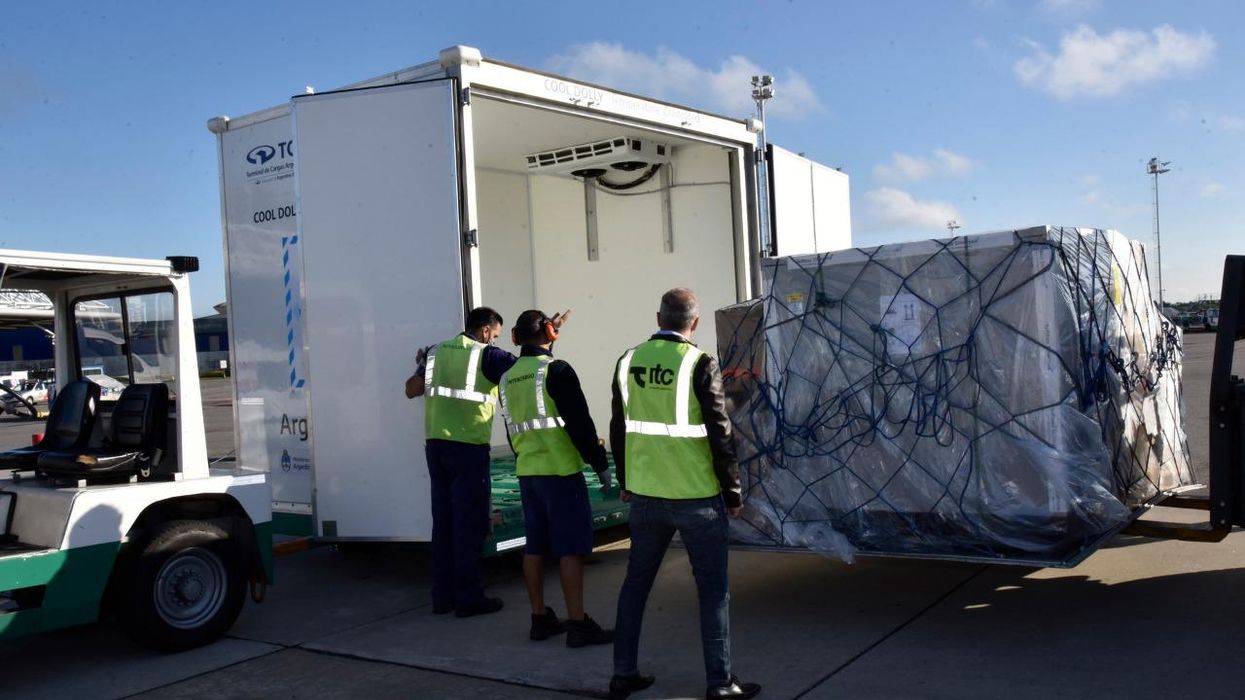Our Big Chance To Do The Noble Thing, Again
Speaking to the Munich Security Conference in February, President Joe Biden proclaimed that "America is back." It's a pleasing sentiment, but our allies as well as our adversaries can be forgiven for taking a wait-and-see attitude.
America's approach to the world has gyrated over the past two decades from George W. Bush's assertive interventionism to Barack Obama's lead-from-behind modesty. Donald Trump's "America First" posture was a mixture of obsequiousness toward dictators and truculence toward traditional allies.
Biden attempted to reify the "America is Back" slogan by urging a unified G-7 position toward China. He hoped for a unanimous declaration condemning China's use of forced labor, and while Canada, Britain and France were ready to sign on, others demurred. It seems likely that the Biden administration will continue to press allies on taking a hard line toward Beijing. He has repeatedly emphasized that confronting China is a defining challenge of his presidency. "This is a battle between the utility of democracies in the 21st century and autocracies," he told reporters at his first news conference as president. "We've got to prove democracy works."
America and other free nations have a chance to do something that would earn true admiration and respect from the rest of the world: donate free vaccines. As in trade, development and technology, we would be competing directly with China and Russia. Biden has pledged 500 million doses. It's a start, but we've got to think bigger.
When the United States launched the Marshall Plan in 1948, Europe was still devastated by World War II. America offered generous aid to the whole continent, including the Soviet Union and its satellites (they declined). The Marshall Plan took its place, as Winston Churchill said of the Lend-Lease Act, as the "most unsordid act" in world history.
Less well remembered is George W. Bush's President's Emergency Plan for AIDS Relief initiative, a program to battle AIDS in Africa, that has saved an estimated 18 million lives. It was the largest effort by any government to fight disease and the largest U.S. government foreign commitment since the Marshall Plan.
There are many goals that are extremely difficult to achieve in foreign policy. It's tough to get Iran to stop funding terrorists. We've tried friendliness (Obama) and harsh sanctions (Trump). Iran remains Iran. North Korea is a disaster. We've tried strategic patience (Obama) and fawning friendliness (Trump). North Korea remains nuclear-armed. It's difficult to try to reform countries in Central America so that their people will not be so desperate as to journey north. It's hard to get nations to agree to joint action on climate change.
But vaccinating the world is something we can do. Is it expensive? Compared with what? The International Monetary Fund estimates that it would cost $50 billion to vaccinate 70 percent of the world's population over the next 10 months. That amounts to just 0.13% of the combined GDPs of the G-7 nations. In Washington, $50 billion is what you find in the sofa cushions.
China and Russia are both offering vaccines to developing nations. But Russia is demanding quid pro quos. In Bolivia, for example, Russia began talks about rare-earth minerals in return for the Sputnik V vaccine. China donated the Sinovac vaccine to Cambodia and Laos ... in return for backing China's position in the South China Sea.
And here's another potential reason that the U.S. vaccines will be preferred: They work. Though the Russians have claimed a 92 percent effectiveness rate for their jabs, some have expressed skepticism. A recent Lancet article called the data backing Sputnik into doubt. It seems there's been a lack of transparency in Russia. Who would have thought?
As for the Chinese vaccine, Sinovac, it's efficacy is officially put at 50 percent, compared with over 90 percent for Pfizer and Moderna. The newly developed Novavax vaccine just clocked in at 90 percent, too. Nations such as Bahrain that were early adopters of the Chinese vaccine have backed away as their caseloads have risen.
If the United States had nothing to gain from vaccinating the world except the satisfaction of benevolence, it would be well worth it. But our own self-interest would be served as well. As long as the virus spreads, it has opportunities to mutate. So far, the vaccines have proven effective against the known variants, but that may not last. If a more virulent and/or vaccine-resistant strain gets a foothold anywhere in the world, it will be knocking on our door before long.
A U.S.-led effort by wealthy nations to vaccinate the world would play to our strengths. Thanks in part to our openness to brilliant immigrants such as Kati Kariko, who developed mRNA techniques, our breakthroughs continue to dazzle.
Americans like to help. We may disagree vehemently about whether to withdraw from Afghanistan or rejoin the Paris Agreement, but most Americans will, I hope and expect, feel a sense of pride at leading the world to overcome this deadly plague, and doing so with graciousness and a servant's heart.
Let's do this. Let's be "unsordid" again.
Mona Charen is policy editor of The Bulwark and host of the "Beg to Differ" podcast. Her most recent book is Sex Matters: How Modern Feminism Lost Touch with Science, Love, and Common Sense. To read features by other Creators Syndicate writers and cartoonists, visit the Creators Syndicate webpage at www.creators.com.



 Even nations with access to COVID-19 vaccine have a huge disparity in levels of vaccination. attribution: Our World In Data
Even nations with access to COVID-19 vaccine have a huge disparity in levels of vaccination. attribution: Our World In Data 







Trump Cabinet Nominee Withdraws Over (Sane) January 6 Comments